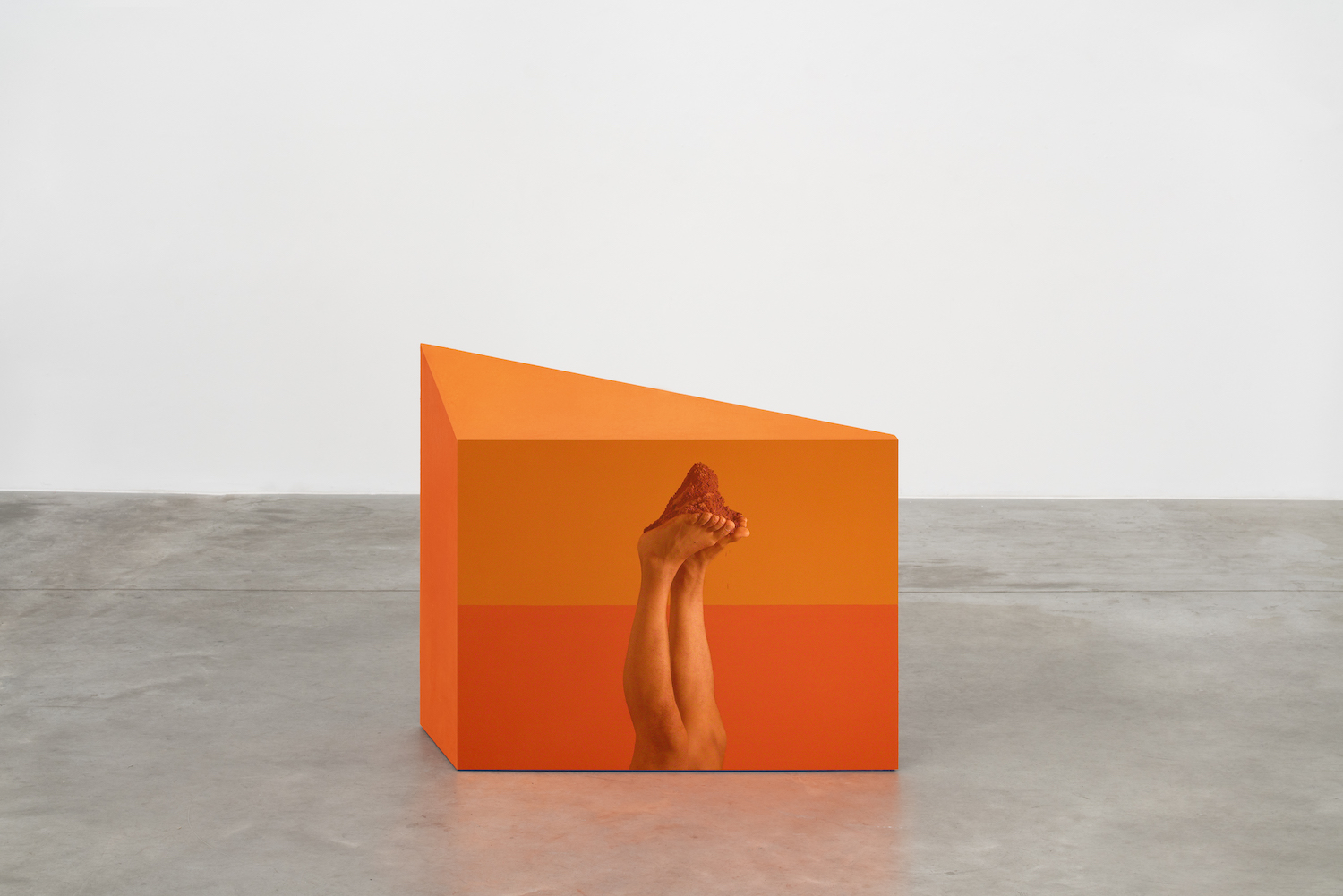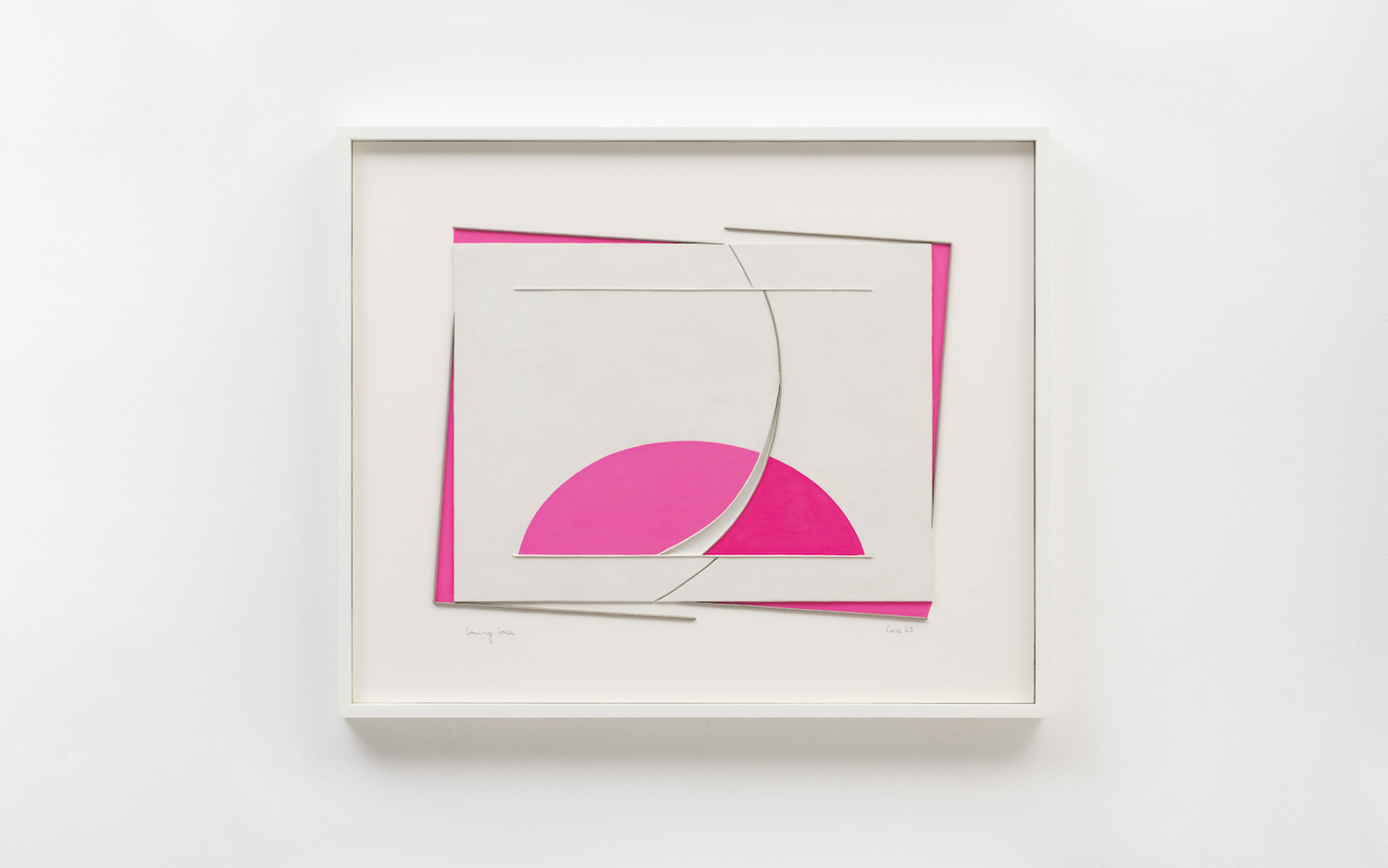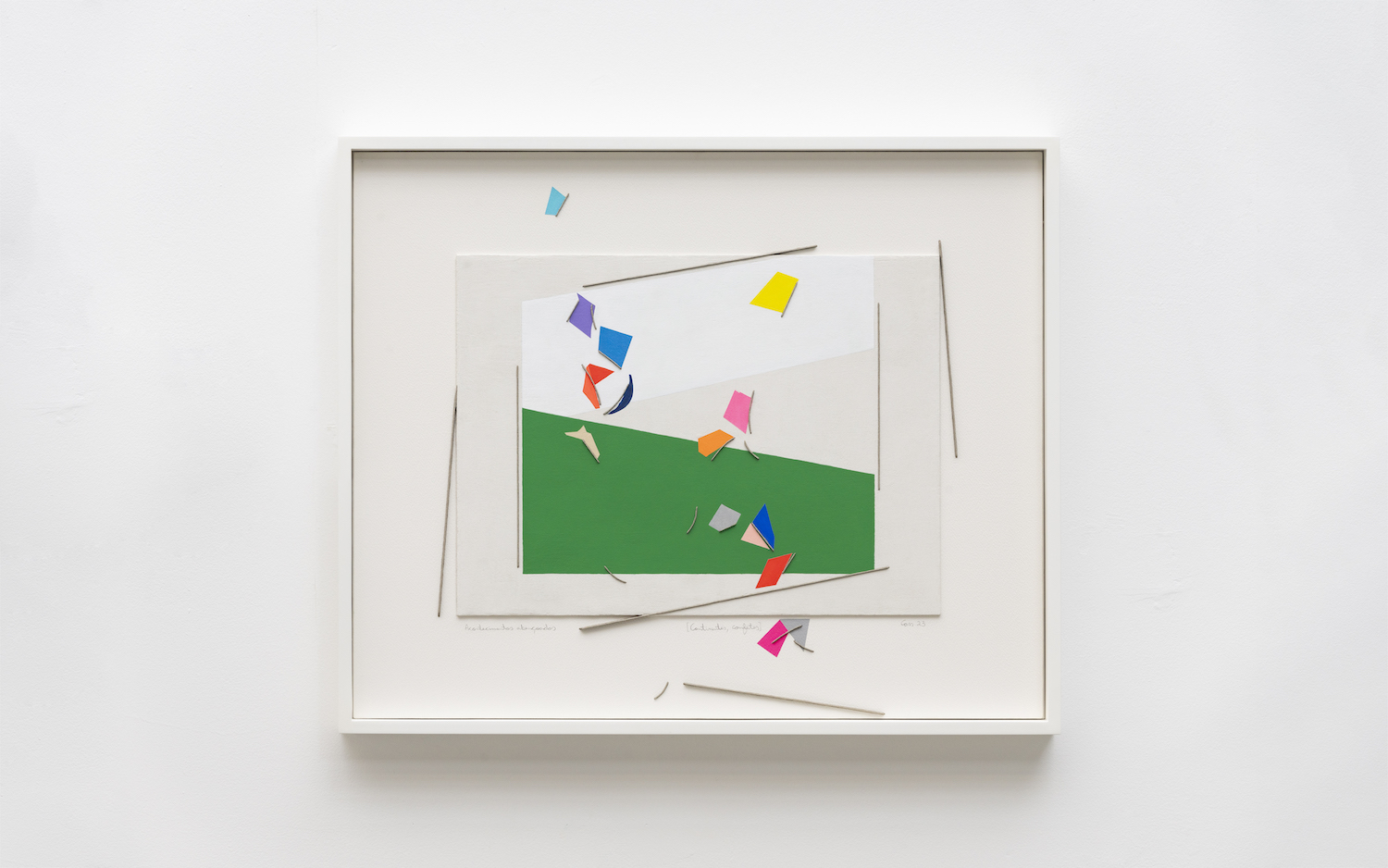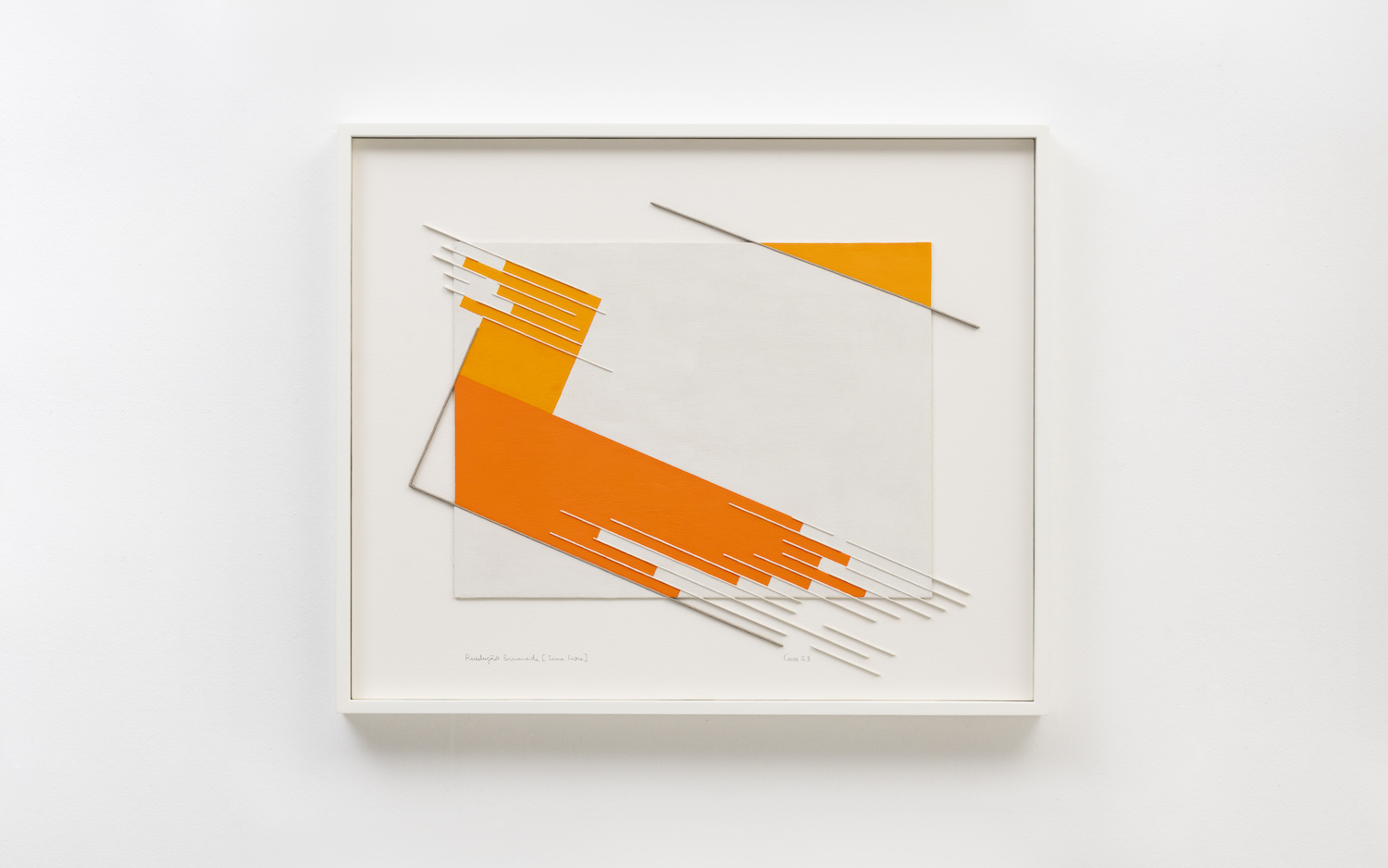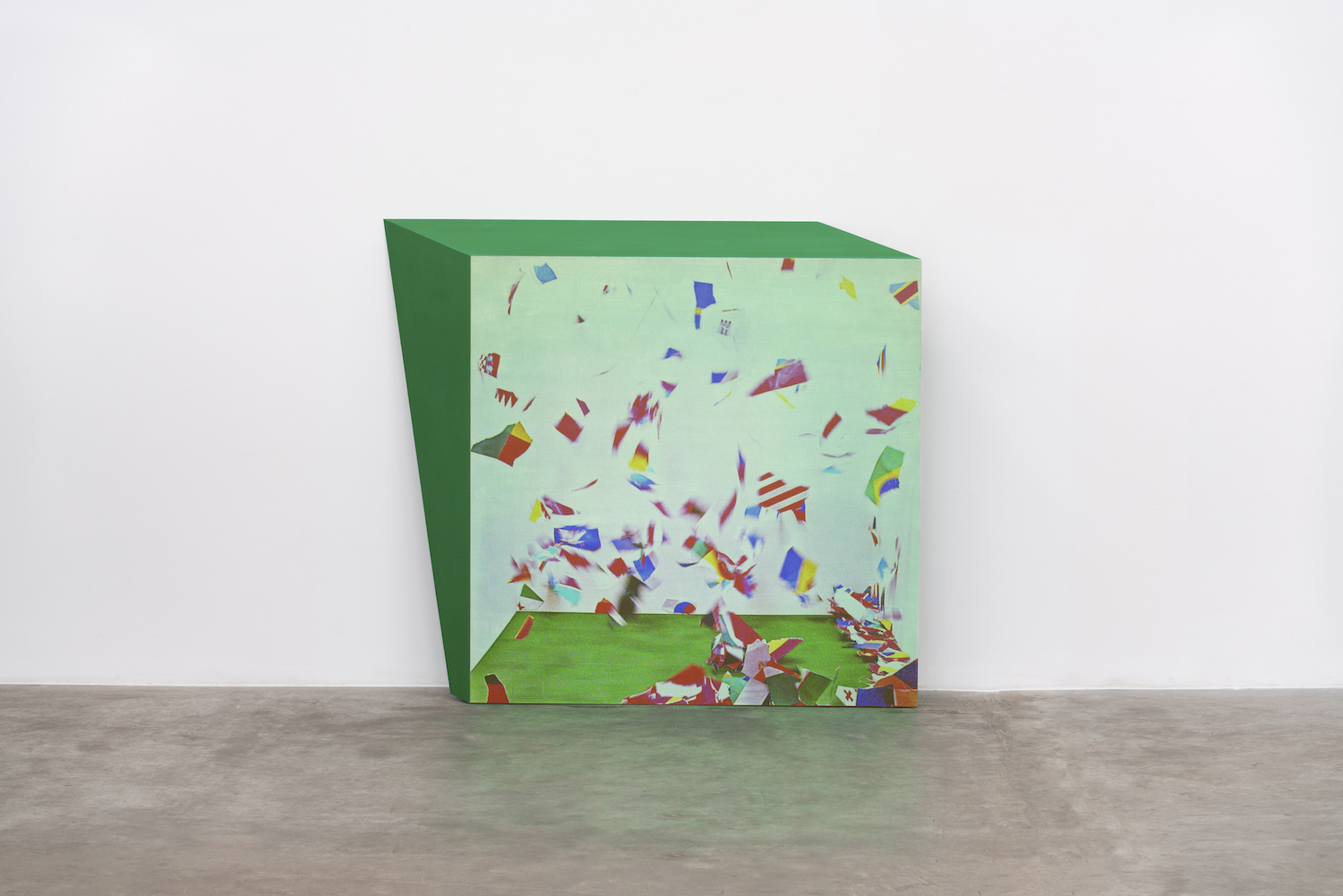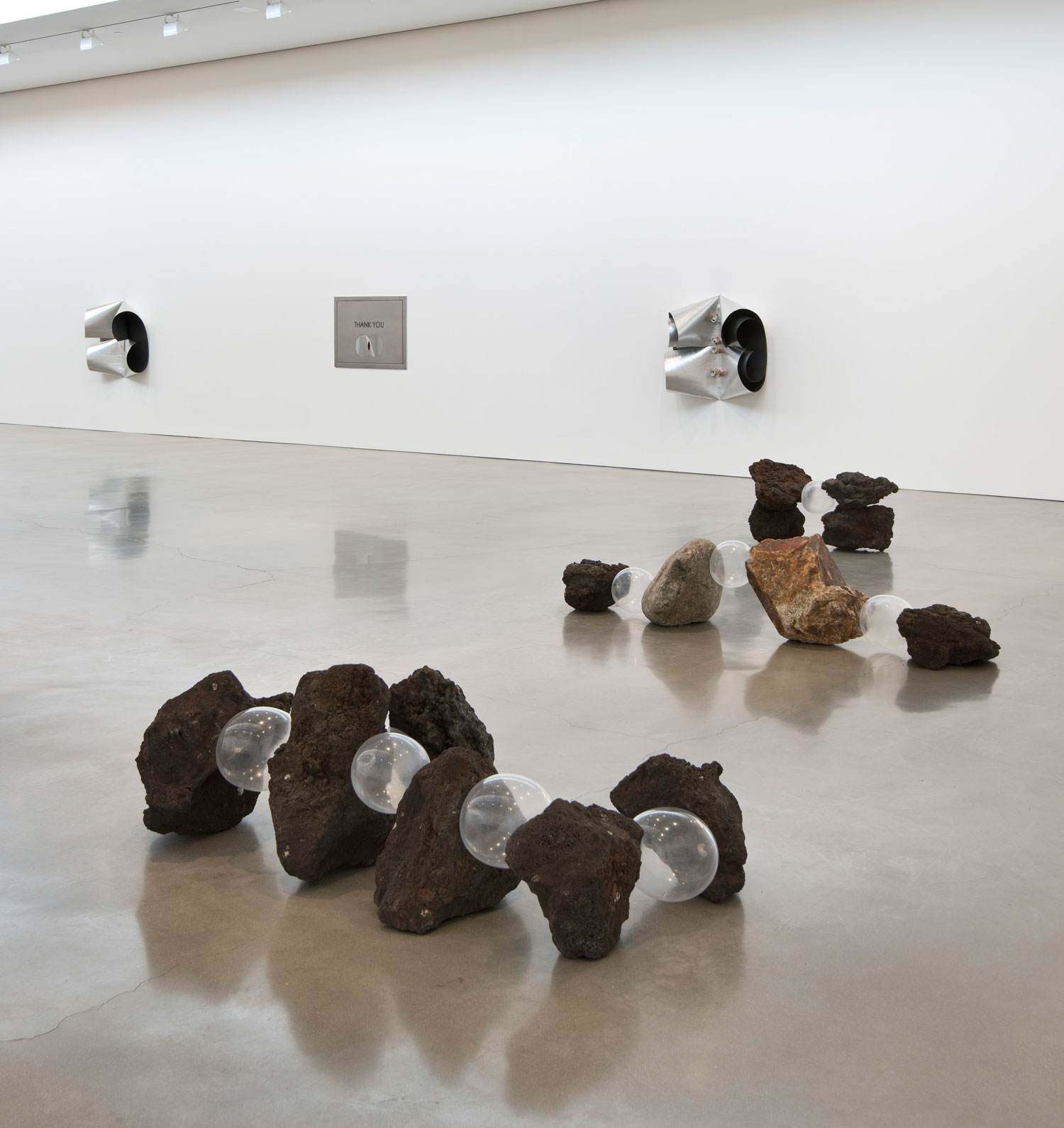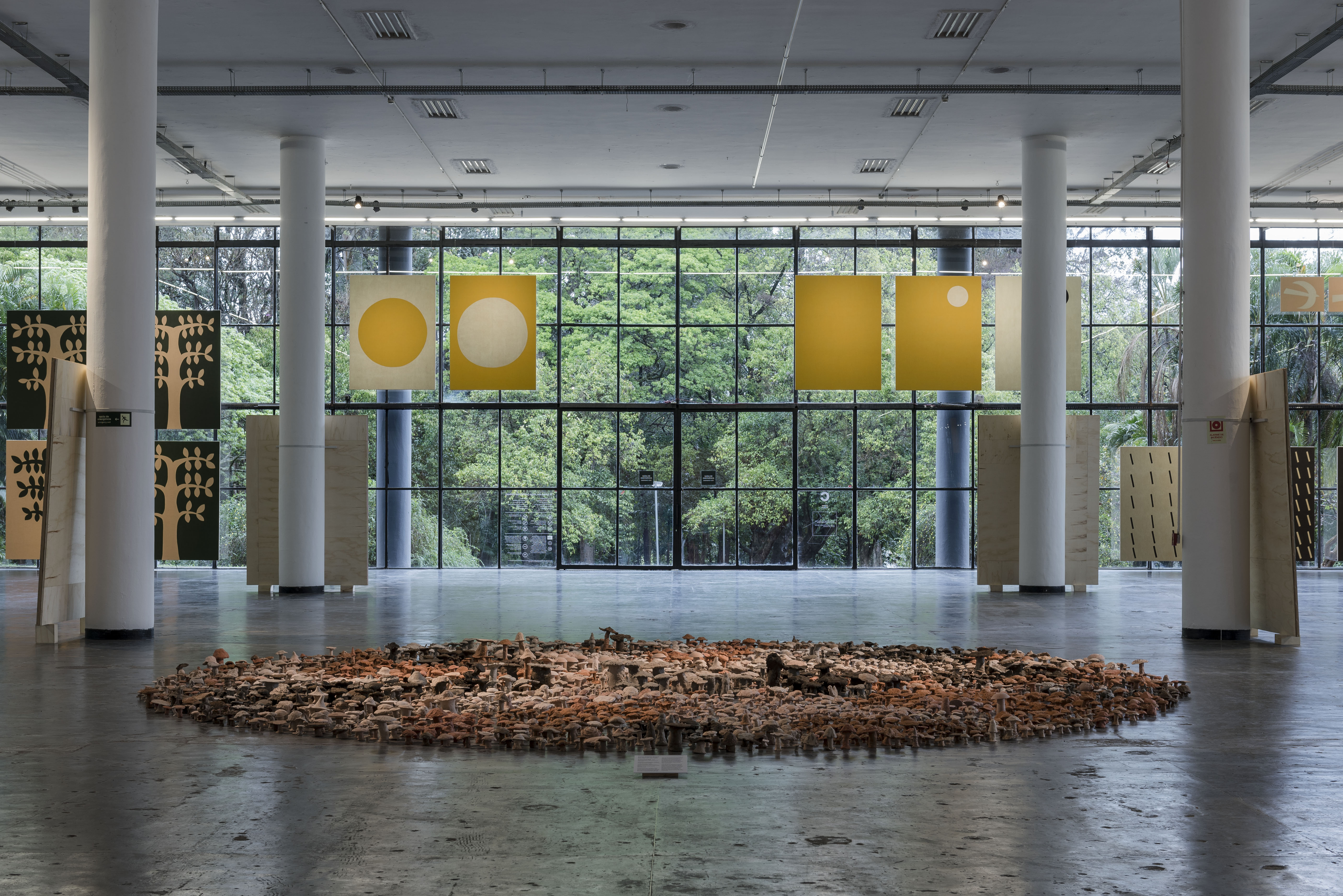For nine years, Rodrigo Cass was a monk of the Carmelite order in southeastern Brazil. He began painting with a contemplative purpose, making geometric devotional pieces following the canons of Byzantine iconography. During this period the artist also completed his BA in visual art and studied philosophy and theology in a Jesuit college. These biographical details are critical for understanding Cass’s central concern: the ambivalence between the bodily and the ethereal in divine, human, and artistic manifestations.
In the recent solo show “libera abstrahere” at Fortes D’Aloia & Gabriel, in São Paulo, the forty-year-old Brazilian artist reprocesses, dismantles, and expands his rigid formative visual grammar into abstract paintings of fine lines and colorful surfaces made with fresh concrete and gouache that dries on paper. The twelve paintings are paired with the highlight of the exhibition: a series of twelve video installations. In each one, the artist repeats a single action over and over. What appears to be a video loop is, in fact, a painstaking repetition of the same action over several minutes, in this way echoing the repetitive routine of monastic devotions.
Each video has a color and a theme, and is projected onto the frustum of a refined irregular solid covered in linen. These occupy the floor, the walls, and the ceiling of the gallery. The color of each object mimics the background of its respective video, providing a sense of depth and integration that ruptures flatness while at the same time reinforcing it. Although distorted, the shapes are not organic: a reverence for the sacredness of geometry, minimalism, and Brazilian constructivism is maintained. A few references from South and North American artists are clear: Hélio Oiticica’s Contra Bólide (1978) and the Relevos espaciais series (1959–60); Lygia Clark’s Geometria amorosa (estudo) (1955) and the Casulos sculptures (1959); and Agnes Martin’s The Islands (1979). The disposition of the works in the gallery’s space relates to Cass’s closeness to sacred architecture, providing a similar optical effect on the eye as the interior of a gilded Baroque church, where the gaze doesn’t know where to focus, magnetized by a blare of visual stimuli. Set as a constellation, these visual decoys crave time of the gaze and reflection, such as religious meditation. They all share a sense of transcendence of space, in which a rigid geometrical system manifests, through operative materiality, a metaphysical gesture. Cass’s interest also broadens into living spiritual experiences, akin to revolution and healing, and interconnecting multiple celestial existences: light, space, earth, fire, water, love, color, emptiness, death, body, and being.
In Geometria sensível (Sensitive Geometry, 2023), numerous hued light bulbs swing, one after another, from the foreground toward a wall upon which they burst. The sequence is projected on a linen-covered prism, painted with purple tempera, that hangs from the ceiling. At times, the artist’s hands and feet appear in the videos, contaminating the purity of the tableau but confirming a human, empathetic presence. For example, on the floor, Permanente revolução (Terra livre) (Permanent Revolution [Free Land], 2023) is an orange solid upon which is projected an image of the artist grinding two bricks together, covering his bare feet with a small mountain of sediment; suddenly, the video cuts to an inverse image, in which Cass, struggling with gravity and the limitations of the human body, balances with great perseverance the same brick powder upon the soles of his feet. His hands also appear in Até a grande transformação (Until the Great Transformation, 2023), where he lights matches and throws them onto a paper skin that slowly burns to reveal expansive fields of colors underneath.
The contrast between these robust bases and their video projections, with their floaty and illuminated images, accentuates an everlasting duality in the history of both religion and art, two fields intertwined in Cass’s practice: the ideal and the material. Like a catholic host, the bases of the installations are not merely supports for the work, but transmute into the work itself, sealed by the consecration of a form bathed with an image once flesh but now made of light. His works manifest a conscious movement toward better connections with other types of existence, following a path that ceaselessly fights against the centrality of the human being in the universe. Cass proposes, through an abstract profanation of geometry, the potential for manifestation and transcendence of matter, and, through the neat repetition of palpable forms and acts, a forge of the spirit.


